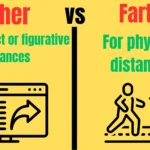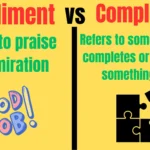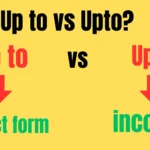Last updated on January 29th, 2025 at 08:40 am
Understanding the difference between “shown” and “showed” can be confusing, especially since both forms come from the irregular verb “show.”
This blog post will clear up the confusion by breaking down each form’s usage, providing real-world examples, and offering practical tips to help you use them correctly.
“Showed” is past tense, while “shown” is the past participle, used in perfect tenses and passive voice.
Whether you’re a writer, student, or just someone keen on improving your grammar, this guide will provide you with all the insights you need.
The Basics of “Show”: Unraveling the Irregular Verb
The verb “show” is an irregular verb, which means its past tense and past participle forms don’t follow the standard pattern of adding -ed.
Here’s a quick breakdown:
- Present Tense: show
- Past Tense: showed
- Past Participle: shown
Examples:
- Present Tense: I show you the report.
- Past Tense: Yesterday, I showed you the report.
- Past Participle: I have shown you the report.
Understanding this irregularity is crucial for correct usage, as it affects how you form sentences in different tenses.
When to Use “Showed”: Navigating the Past Tense
The past tense form “showed” is used to describe actions that occurred in the past.
It’s straightforward and generally follows the same rules as other regular verbs in past tense.
Examples of “Showed” in Different Contexts
- Simple Past: She showed me the new office layout yesterday.
- Narrative Context: During the meeting, he showed everyone the financial projections.
Common Scenarios:
- Historical Events: “The museum curator showed the artifacts to visitors last year.”
- Completed Actions: “They showed the movie at the festival last summer.”
Identifying Past Tense in Action
Recognizing past tense in sentences helps avoid confusion between “showed” and “shown.”
Examples Illustrating Correct Usage
- Direct Past Action: “She showed us the design before the deadline.”
- Sequential Past Events: “After she showed the draft, we discussed the changes.”
Common Mistakes to Watch Out For
- Mixing Tenses: Incorrect: “She showed the results have been accurate.” Correct: “She showed that the results were accurate.”
- Verb Form Confusion: Incorrect: “He has showed me his findings.” Correct: “He has shown me his findings.”
“Shown”: Breaking Down the Past Participle Form
“Shown” serves as the past participle form of “show,” used in perfect tenses and passive voice.
Usage in Perfect Tenses
- Present Perfect: “I have shown the evidence to the committee.”
- Past Perfect: “By the time we arrived, they had already shown the new software.”
Usage in Passive Voice
- Present Passive: “The results are shown in the report.”
- Past Passive: “The presentation was shown on the big screen.”
Comparing Showed and Shown in Sentences

Here’s a side-by-side comparison to illustrate the difference:
| Form | Sentence | Usage |
| Showed | “She showed me the new layout.” | Past tense |
| Shown | “The layout has been shown to the team.” | Past participle in perfect tense |
Analysis of How Each Form Affects Meaning and Structure
- “Showed” implies a completed action in the past.
- “Shown” is used to form perfect tenses and passive constructions, indicating that an action has relevance to the present or has been done to the subject.
Dissecting Sentence Structure with “Showed”
The form “showed” fits into various sentence structures. Let’s break down its use:
Simple Sentences
- Structure: Subject + showed + object
- Example: “He showed the map.”
Complex Sentences
- Structure: Subject + showed + object + clause
- Example: “She showed us the plans after we discussed the initial ideas.”
Tips for Avoiding Common Errors
- Ensure Correct Tense: Double-check that “showed” is used for past events and not mixed with present or future contexts.
- Consistency: Maintain consistent tense throughout your narrative to avoid confusion.
Examples of “Shown” in Complex Tenses
“Shown” often appears in complex tenses, adding depth to how we describe actions and states.
Detailed Examples
- Past Perfect: “By the time we met, they had already shown their new findings.”
- Present Perfect: “I have shown you all the relevant data.”
Insights into How “Shown” Modifies Sentence Meaning
- Past Perfect: Indicates an action completed before another past action.
- Present Perfect: Shows an action that has relevance or has been completed recently.
Active vs. Passive Voice: Choosing “Shown” or “Showed”
The choice between active and passive voice impacts sentence clarity and focus.
Active Voice
- Example: “She showed the results to the audience.”
- Usage: The subject performs the action.
Passive Voice
- Example: “The results were shown to the audience by her.”
- Usage: The focus is on the action or the recipient.
Choosing the Right Form
- Active Voice: Use “showed” for clear, direct statements about past actions.
- Passive Voice: Use “shown” to emphasize the action or result, especially in perfect tenses.
Language Nuances: When “Showed” Can Be Used as a Past Participle
Though uncommon, “showed” can sometimes be used in a past participle context.
Contexts and Examples
- Colloquial Usage: “He’s showed me how to fix it.” (Informal, less standard)
- Correct Usage: “He has shown me how to fix it.”
Enhancing Your Grammar: Tips for Remembering the Difference
Mastering “shown” vs. “showed” can be easier with a few practical tips.
Practical Tips and Tricks
- Use Mnemonics: Remember “shown” for perfect tenses and passive voice, like a “shiny” outcome of actions.
- Practice Regularly: Write sentences using both forms to reinforce understanding.
- Visual Aids: Create tables or charts showing different uses.
Summary of Key Takeaways
- “Showed”: Use for simple past actions.
- “Shown”: Use for perfect tenses and passive voice.
- Consistency: Maintain tense consistency throughout your writing.
People Questions
1. What’s the main difference between “showed” and “shown”?
“Showed” is the simple past tense, while “shown” is the past participle used in perfect tenses and passive voice.
2. When should I use “showed”?
Use “showed” for actions completed in the past, like in “She showed me the picture yesterday.”
3. How do I use “shown” correctly?
“Shown” is used with auxiliary verbs like “have” or “had” for perfect tenses, e.g., “I have shown you the results.”
4. Can “showed” ever be used as a past participle?
Rarely, but in informal speech, you might hear “He’s showed me,” though “He has shown me” is grammatically correct.
Conclusion
Understanding when to use “shown” versus “showed” enhances both written and spoken communication.
By mastering these forms, you can ensure clarity and precision in your language.
Practice regularly, and you’ll find that these once-tricky distinctions become second nature. Feel free to ask questions or share your experiences in the comments.

Sophie Mitchell, a seasoned English educator, brings her passion for language and years of teaching expertise to TalkSpeaker. With a knack for simplifying grammar and expanding vocabulary, she empowers learners to master English with confidence.




